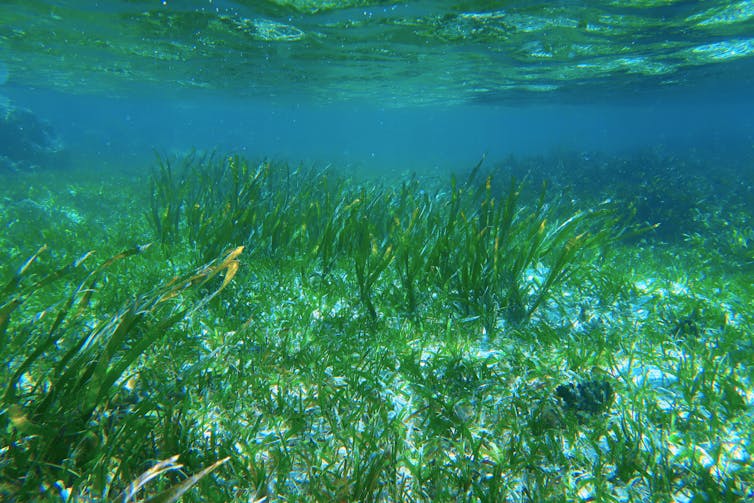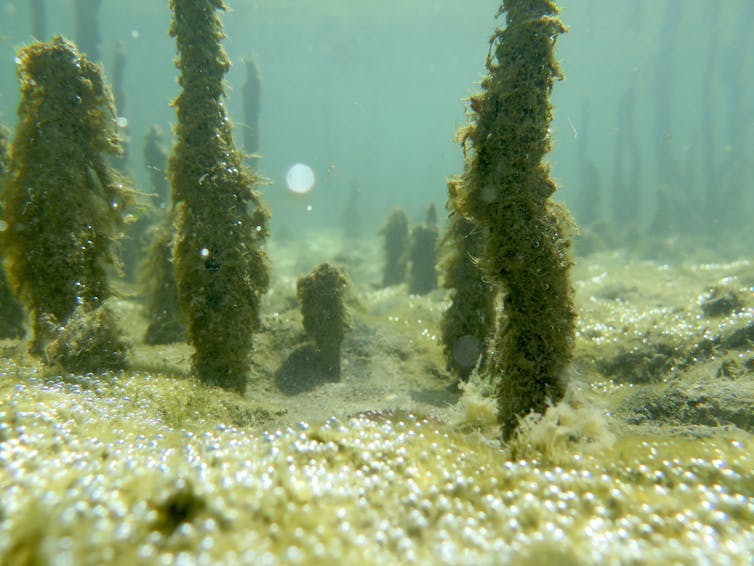From the coast to the deep sea, changing oxygen levels affect life in a variety of ways, as marine biologist MARCO FUSI from Newcastle University explains
Earth’s atmosphere maintains a constant level of oxygen, whether it is a wintry, rainy day or hot summer. Across the ocean, oxygen concentrations vary enormously between different places and over time.
Sometimes oxygen levels change within the course of a day while, in some deep parts of the ocean, oxygen concentrations remain constant. In certain places there’s no oxygen at all, but life still thrives.
Marine species respond to ocean deoxygenation (the decrease of oxygen levels in sea water) differently depending on where they live. With seas under threat from climate change and pollution, both of which contribute to deoxygenation, some marine species are at greater risk than others.
As a marine ecologist, I research how changes in oxygen availability affect marine animals’ resistance to climate change. My studies show that coastal marine species exposed to the daily variability of oxygen are more resistant to spikes in deoxygenation than creatures living in the deep that are adapted to consistent oxygen levels.

By the coast
For coastal creatures such as cuttlefish, seastars or crabs living in seagrass, kelp forests or mangroves, daily life is an oxygen rollercoaster.
During the day, photosynthesis by algae and plants is triggered by the sunlight and produces a massive amount of oxygen. This leads to oxygen supersaturation, a state in which so much oxygen is produced that bubbles of oxygen are released into the water.
Coastal ecosystems such as seagrasses, kelp, corals and mangroves help provide a buffer to deoxygenation, because this supersaturation boosts the metabolism of marine life living there – with more available oxygen, animals can produce more energy and cope more easily with slight deoxygenation.
At night, without any sunlight, coastal algae and plants do not photosynthesise. Instead, they take in oxygen through the process of respiration – just as animals breathe, the leaves of plants respire and take oxygen into their cells. So animals there are exposed to a low-oxygen environment on a daily basis.

These marine animals have evolved to cope with fluctuating levels of high and low oxygen in sea water by exploiting oxygen supersaturation during the day to protect themselves from rising temperatures and pollution.
Then, during the night when oxygen is scarce, they switch to other anaerobic metabolism processes such as fermentation – just as our muscles produce lactic acid during intense anaerobic exercise. Predatory crabs, for example, actively hunt in mangroves during the night with very limited oxygen.
But coastal animals adapted to short-term oxygen depletion cannot cope well with long periods without much oxygen. So problems arise when daily fluctuations of oxygen are disrupted by global warming and human-caused pollution, causing low oxygen conditions to persist for days or weeks.
For sea urchins, this makes them slower and less able to escape from predators. For other animals, this might result in slower feeding rates or reduced growth.
In the deep ocean
At depths of between 200 and 1,500m, in what is known as the “oxygen minimum zone”, oxygen is at the lowest level of saturation. Here, some deep sea animals, especially fish, are well adapted to these extremely low-oxygen conditions.
While these fish won’t be directly affected by deoxygenation because they already thrive in this habitat, it’s more likely that deoxygenation will expand this low-oxygen zone, potentially affecting fish nearby that cannot tolerate further deoxygenation.
In the abyss, at depths of more than 3,000m, animals are used to living in conditions in which oxygen levels never fluctuate. Sunlight doesn’t ever reach the deepest parts of the seafloor and so photosynthesis cannot happen.
Here, oceanic currents bring down a constant supply of oxygen, but climate change is affecting the dynamics of these currents.
Even the slightest reduction in oxygen levels could be catastrophic for marine life here. In certain scenarios, deep-sea mining could release large amounts of organic matter from the sediment. This could react with any available oxygen and further deplete it, resulting in the death of living creatures.
On the briny seabed
In some locations, including the Red Sea, very salty brine pools or submarine lakes on the seabed are bursting with life, despite there being no oxygen. Bacteria, crabs, mussels and eel-like fish have evolved in these deoxygenated seas and won’t be affected at all by further deoxygenation.
Across the ocean, deoxygenation can exacerbate other threats such as ocean acidification (the reduction in the pH of the ocean) or sudden increases and decreases in salinity. Together, these changes can be lethal for marine species that survive in very specific conditions.
So persistent low-oxygen conditions will pose different threat levels to animals in different habitats. Coastal habitats that produce oxygen, such as seagrass beds, must be protected and restored.
The oceanic current that brings oxygen down to the deep sea is vital too, and the best way to conserve that is to slow global warming as quickly as possible.

Don’t have time to read about climate change as much as you’d like?
Get a weekly roundup in your inbox instead. Every Wednesday, The Conversation’s environment editor writes Imagine, a short email that goes a little deeper into just one climate issue. Join the 30,000+ readers who’ve subscribed so far.
MARCO FUSI is Senior Lecturer in Marine Biology at Newcastle University.
This article is republished from The Conversation under a Creative Commons licence. Read the original article.
Also on Divernet: Rise in dead zones causes concern


